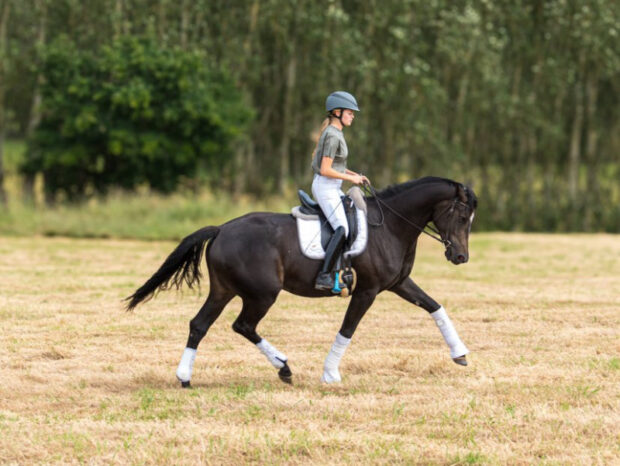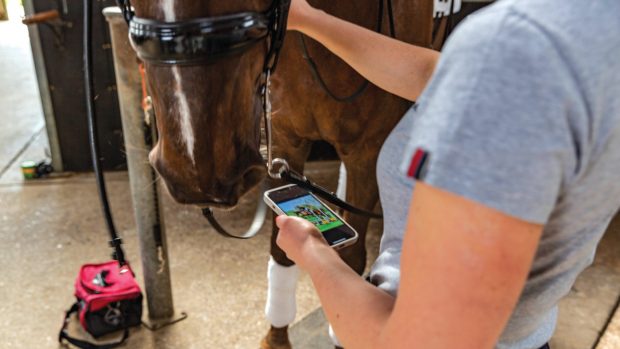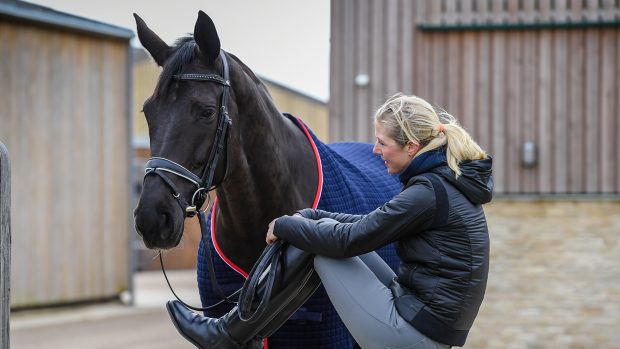In an increasingly online world, how can riders and equestrian businesses make social media work harder for them? Swedish dressage rider and social media influencer Carl Hedin shared his top tips at the FEI Sports Forum in Lausanne (26-27 March 2018)
A broken arm was the start of Swedish dressage rider Carl Hedin’s success in making social media a fundamental part of his equestrian business.
“I knew from a very young age that I wanted to work professionally with horses,” Carl, 26, told the fourm.
“There are a lot of really good riders out there, beautiful riders — I have to be the very best I can be to compete with these people, but I doubted that would be enough on its own.
“I had to find something to give me an extra bit of edge, but I didn’t know what it was until later.”
While Carl was off riding due to a broken arm in 2011, his employer asked him to take some videos of some horses for sale, which he then posted on Facebook.
“I thought this was utterly boring, I didn’t want to do it at all,” admitted Carl.
“I noticed some videos would get more views than others, if I posted on a Monday morning we couldn’t get a lot of interaction with the videos, but on a Friday evening when people were home drinking wine, we would.”
This led to an increase in interest in the horses for sale and the company’s Facebook page went from zero to 5,000 followers in three months, at a time when social media was still in its relative infancy.
Carl realised there was more to social media than he first thought and it is now an integral part of his own dressage business.
“I thought if I have a great profile on social media, what will that give me? That will give me influence and influence is key in 2018 society,” said Carl, who has more than 127,000 Instagram followers.
“In a way it also gives me a financial platform, which is so important.”
9 ways riders can get the most out of social media
1. Riders and businesses cannot afford to ignore social media: “Social media has already happened, it is already a thing, it is not whether it is going to happen or not,” says Carl.
2. Find your own identity: learn what posts or pictures go down well with your followers and use this to build a base.
3. Content is “so important” and your social media channels should tell a story: “In terms of promoting your own sport and, what I do which is sharing my journey with my horses, it is really just the normal things — the everyday training, being around horses,” he says. “It is not so much to see that I’m winning or doing a perfect pirouette on a horse, people don’t really care about that — I wish they would care more about that! They want to see that interaction between man and animal.”
4. Learn how other sports use social media to bring in new people: “You can look at other sports, for example slopestyle — that is a sport where the ski industry is great at promoting itself through social media, getting people to like their sport and it means they are on the rise. That is something I think is very important to incorporate in a sport like equestrianism, where it has great tradition but also suffers some problems because of that.”
5. Social media is the ‘go to’ place to find out about new things, whether that is a YouTube tutorial on how to use a camera, or finding out more about horses: “It is a way for people that have never seen a horse before to live the life of a professional rider.”
6. Put a value on yourself: “When the day comes that a company contacts you and says ‘we want to do a collaboration with you’ it is so important to put a value onto yourself. Two free numnahs or two free saddle pads are not going to pay your vet bills.”
7. Think before you post: “I have some rules when it comes to social media: I want to be personal, but I want to be private. Always before I post something I think ‘is this too personal? Is it on the edge of being private?’ so I am always cautious about what I post. Whatever I post will be out there for infinity.”
8. Cross-promotion is “the core of social media”: whether this is advertising, sharing other riders’ or organisations’ news to give them a boost, or federations sharing great snippets from other disciplines — everyone can help make social media a supportive place and bring the sport to new audiences.
9. Remember your manners: check before taking a photo either of or with someone that you plan to share online that they are happy for you to do so.
Don’t miss all the latest equestrian news and reports in Horse & Hound magazine, out every Thursday





